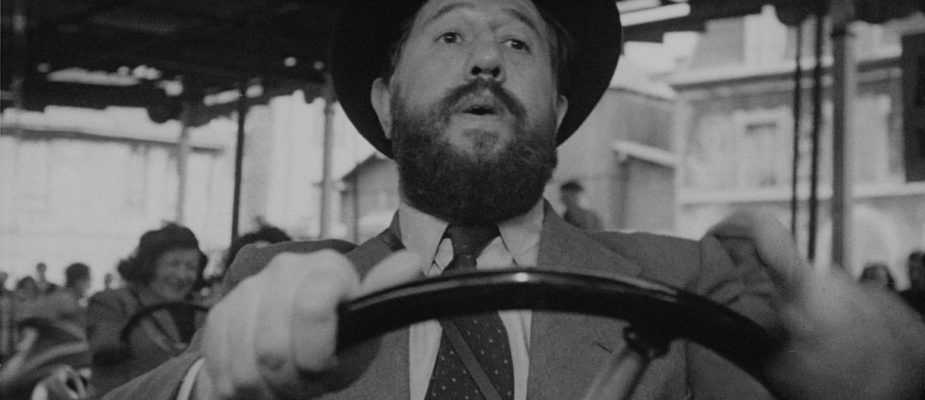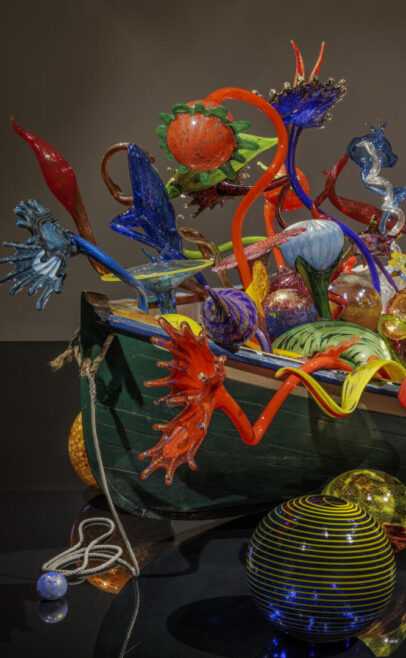In the freedom that emerged in the immediate aftermath of World War II, the repressed returned to screens on both sides of the Allied Atlantic. In the United States, it went by the name of film noir, a now-iconic generic classification that brought cynical stories and dark pools of shadow to American movie-houses. German and Eastern European-Jewish directors like Robert Siodmak (The Killers, 1946) and Billy Wilder (Double Indemnity, 1944) were among those who exorcised the demons of the Second World War through a visual storytelling style that returned to Germany’s pre-Nazi, Expressionist and Weimar past. In France, following years of censorship, new filmmakers like Robert Bresson (Les Dames du Bois de Boulogne, 1945) and Jean-Pierre Melville (Le Silence de la Mer, 1949) created personal aesthetics that predicted the New Wave of a decade later–and spoke to the new freedoms that materialized with the end of the German occupation. With Julien Duvivier’s Panique (completed in the 1946; released in 1947) at least, there was also confirmation of a short-lived return to the pre-war Poetic Realist style–another of noir’s precursors–that the director himself came to be associated with his 1937 Jean Gabin vehicle, Pépé le Moko.
The first film shot by the outstanding prewar director in the aftermath of the Second World War, Panique is exemplary of the period’s new rhetorical freedoms. In the film’s opening scene, which features a vagrant fighting with a dog for scraps of food as a man snaps photos–a beautiful distillation of the despairing postwar period in its own right–and the discovery of the corpse of a young woman, Duvivier’s streetcar flashes the name “Villejuif” as it reaches its destination (and the film’s village setting). Translating as “Jewish Town,” Duvivier thus brings Europe’s horrific recent history into view. Duvivier will further highlight this persecuted population in the stereotypically Jewish appearance of the aforesaid photographer, the singularly unappealing Monsieur Hire (Michel Simon, Boudu Saved from Drowning). Hire, indeed, quickly arouses the suspicions of townsfolk and spectator alike, beginning with his utter indifference in hearing news of the discovered corpse: as the shopkeeper’s wife insists that “there is no religion or morality anymore,” Hire complains that the cheese isn’t ripe enough. Hers is another definition of the postwar moment, of the world after the extermination camps, while his is the nihilist’s response. In any case, Hire’s behavior quickly arouses the viewer’s suspicions and predisposes us to think poorly of the film’s most quintessentially Jewish character–a problematic prospect that the filmmaker, nonetheless, uses to great rhetorical and storytelling effect.
The subsequent arrival of the beautiful Alice (the splendidly named Viviane Romance) will consume the leering attention of M. Hire, who, as circumstances would have it, occupies a nearby apartment that looks into the young woman’s room. As we immediately discover, Alice has just been released after sacrificially serving a prison sentence for her criminal lover, Alfred (Paul Bernard)–the same man she secretly rejoins in Villejuif. He is Hire’s opposite, an attractive and charismatic man who fits in with his neighbors. Alice is disgusted by the homely, middle-aged Hire’s attention. When she and Alfred encounter him at a local carnival, in the film’s fabulous bumper car set-piece, they immediately ram the lonely Hire, smashing into him with great relish as the other locals gang up and do the same. Throughout this thrilling set-piece, which notably precedes the revelation of Hire’s guilt or innocence, Duvivier’s mobile framing and rapid, point-of-view editing, his low-angle camera placements, and the scene’s increasing musical dissonance–which plays on the constant auditory and visual presence of the carnival that provides the film with its grotesque backdrop–all combine to establish Hire’s isolation from the rest of the community, and encourages that the viewer sympathize with this marginalized character. As unappealing as he is made to be, we can’t side with bullies.
Hire’s neighbors will engage in an even more sinister persecution of the Jewish character in their “hunting party.” By this point, Duvivier has resolved his character’s guilt or innocence, transforming this scene into a vigilante act of justice or a kangaroo court that confirms the film’s particularly attitude toward the film’s latent anti-Semitism. If Panique constructs its initial whodunnit story with recourse to Jewish stereotypes, it proves more a matter of audience manipulation when one considers Hire’s fate–and how it comes to pass during the film’s final dramatic foot chase. Panique, ultimately, provides an elegant career bookend with the director’s very fine David Golder (1930), a film where the repression finds the form of its protagonist’s Jewish heritage itself, which the title character sublimates for his capitalistic whims. In Panique, the repressed that returns is a French cinema and historical reality that had been repressed with the collaboration of the Vichy state. The villains are not a comfortable other in Panique no less than in a victorious France.
As bleak as all this makes Panique sound, and it certainly is in its ethno-cultural implications, Duvivier’s masterful visual storytelling makes it anything but. We are indeed in the hands of a major filmmaker who has been refreshed by the restored freedom of the period–much as he had been by the new opportunities presented in the early sound era (with Au bonheur des dames joining David Golder as one of the director’s two outstanding and visually inventive features from 1930, for example). There is a fluidity and predilection for making points visually, through objects in Panique that belongs to this earlier era–as we again see in the scene featuring the tramp that opens the film. As the film proceeds, Duvivier makes frequent use of his crane, he dramatically pushes in to highlight narrative details, he briskly moves with characters, and adopts a variety of novel visual points of view that frequently look up at and down onto the film’s fated characters. There is great visual variety throughout Panique, in others, an economy of experimentation that nonetheless is calibrated to satisfy the needs of narrative. The net effect is a film that luxuriates in the pleasures of cinema.
Panique is also a film of the sort of sexual frankness that was repressed by the Hays Code of contemporary Hollywood. The unmarried Alice and Alfred’s liaisons are presented forthrightly, and even precipitate the revelation of a key plot point as the couple share a post-coital moment. As viewers we are once again implicated, doubling Hire’s leering point of view, even as we sneer at the disgusting antagonist–in emotional kinship with the film’s physically appealing Alice and Alfred as we the viewers instinctually equate morality and beauty. Panique is perpetually and brilliantly constructed to undermine our own worst instincts as viewers–and to bring about Hire’s ultimate fate.









